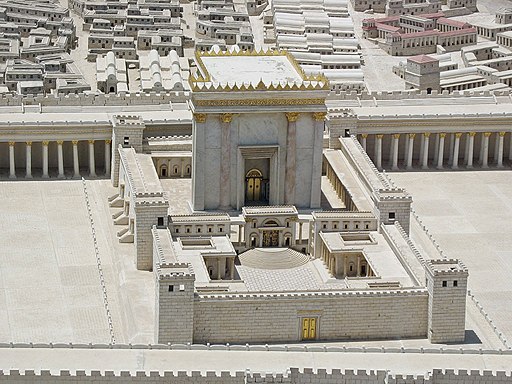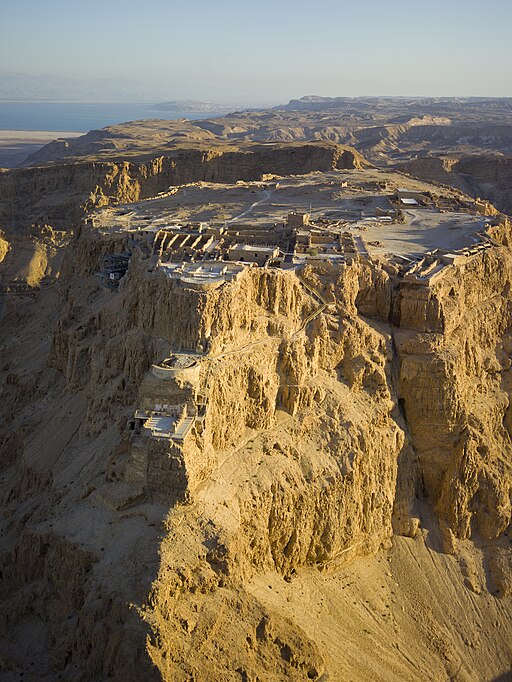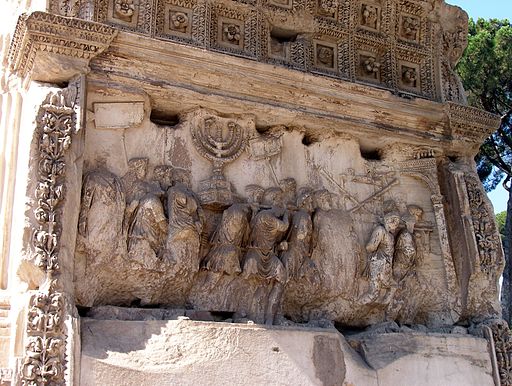We all know that the Roman Empire was one of the greatest empires in the world, overthrowing existing empires.
But did you know that the Jewish people in Judah fought them not once but twice?
What caused the Roman-Jewish wars in Judah?
And how successful were the Jews?
Well, prepare yourself to read the surprising (and tragic) story of The Roman-Jewish wars in Judah!
So the Jews are back in Jerusalem, where Jewish life flourishes under the Hasmonean dynasty.
Using the turmoil in the area, Judah even receives independence (129 BC) and regains boundaries almost as vast as the ones of Solomon’s realm, 800 years earlier.
The comeback is complete!
Or is it?

You may have heard this before, but a new superpower rises – the Roman empire.
In 63 BC, the Romans conquer vast areas in the Middle East, including the kingdom of Judah.
For a change, they grant the Hasmonean king, Hyrcanus II, limited authority under the Roman governor of Damascus
However, the Jewish people of Judah are not pleased by the new situation, and are hostile to the new empire.
In 37 BC Herod, a son-in-law of Hyrcanus II, is appointed King of Judea by the Romans. Herod (also know as Herod the Great) becomes one of the most powerful monarchs in the eastern part of the Roman Empire, as he is granted almost unlimited autonomy in the country’s internal affairs.
Herod launches a massive construction program, which includes the cities of Caesarea and Sebaste as well as the fortresses at Herodium and Masada.
If you visit Israel today, you can not only see the remains of this construction, but actually enter it and feel as if you traveled 2000 years back! I don’t know about you, but I find it extremely amazing to be able to walk through history.
Herod also remodels the Second Temple in Jerusalem, restoring its glory and turning it into one of the most magnificent buildings of its time. In fact, the Western Wall in Jerusalem (also called the Kotel or Wailing Wall) is part of a longer wall that was originally erected as part of the expansion of the Second Jewish Temple begun by Herod.
Despite his many achievements, Herod fails to win the trust and support of his Jewish subjects.
You don’t need to ask yourself, WWTJD – what would the Jews do – since you already know the answer.
Here comes revolt!
As all men go, Herod eventually dies and Judah comes under direct Roman administration. The Romans consistently and increasingly suppress the Jewish life. They even plunder the Temple, declaring that the money is for the Roman Emperor.
You remember last time, don’t you? You don’t need to ask yourself, WWTJD – what would the Jews do – since you already know the answer.
Here comes revolt!
In 66 CE a revolt breaks out. Titus, a Roman military commander, is left in charge of ending the Jewish rebellion. After 4 years of fierce fighting, he besieges the center of rebel resistance in Jerusalem, in early 70 CE. And 7 months of siege later, the Jewish people of Jerusalem are defeated.
What happens to the city of Jerusalem?
Titus burns it. To. The. Ground. He destroys the city completely, including the Second Temple.
The City of David has fallen.
For the achievement of squashing the rebellion, Titus is awarded a triumph – the Arch of Titus in Rome, Italy, that commemorates his victory to this day. And if you visit it, you can find depictions of the spoils taken from the Temple in Jerusalem, including the menorah.
The last Jewish outpost at Masada is defeated in 73 CE, after yet another siege. This is one of the final events of the first Roman-Jewish war of 66CE-73CE.
Hold up. Did you just say the first Roman-Jewish war?
Yes I did. Because the battle for justice continues!
So it is 74 CE. Jerusalem is in ashes, the Temple is destroyed, the Jewish rebellion is squashed. Tens of thousands of Jews were killed in the first Roman-Jewish war that lasted 7 long, bloody years.
But the Jews survive the defeat. The Sanhedrin – the supreme legislative and judicial body – is reconvened in Yavneh (70 CE), and later in Tiberias.
And as the years go by, the Jewish community slowly recovers. Institutional and communal life slowly renews. In the absence of the Temple, synagogues become the focus of the Jewish communities.
But it all changes once more in 132 CE. The Roman Emperor Hadrian initiates the construction of a new city, Aelia Capitolina, over the ruins of Jerusalem. As if this isn’t enough, he also starts the erection of a Temple to Jupiter on the Temple Mount, where the Second Temple stood only 60 years earlier.

By now, I believe you can guess what happens next, can’t you?
If you mess with the temple, the violence will be ample.
So another revolt breaks out, starting a second Roman-Jewish war in Judah. This time, it is led by Simon Bar Kokhba, who is a Jewish military leader. The revolt even gets his name – the Bar Kokhba revolt. Respect.
The beginning is extremely promising. Despite the arrival of significant Roman reinforcements from Syria, Egypt and Arabia, the rebels score important victories over the Romans. The Jewish rebels even establish an independent state over most parts of Judah Province for over two years! Simon Bar Kokhba takes the title of Nasi (“prince”).
Thanks to his massive achievements, Bar Kokhba is regarded by many Jews as the Messiah, who would restore their national independence.
The future looks promising, right? Well, you’ve probably heard the phrase “looks can be deceiving”, haven’t you?
Emperor Hadrian is furious. How is it possible that such a tiny population causes so much trouble? How do the Jewish people manage to embarrass the mighty Roman Empire time and time again?
As far as Hadrian is concerned, the revolt needs to end. And it needs to end fast. So he assembles a large-scale Roman force from across the Empire, which invades Judah in 134 CE under the command of General Sextus Julius Severus. Catchy name.
It takes the Roman army six full legions with auxiliaries and elements from up to six additional legions to finally crush the revolt and end the second Roman-Jewish war in Judah.
Well, they are not doing great. Actually, the aftermath of the revolt and the Roman-Jewish wars in Judah is disastrous.
“My goodness, that is a lot of manpower. What happened to the Jews?” you must wonder.
Well, they are not doing great. Actually, the aftermath of the revolt and the Roman-Jewish wars in Judah is disastrous.
580,000 Jews perished in the war and many more died of hunger and disease. These numbers are almost inconceivable at the time. The Judean war captives? Sold into slavery. The name Judah? Erased, wiped off the map and replaced with Syria Palaestina.
The Romans even bar Jews from Jerusalem.
Judah would not be a center of Jewish religious, cultural, or political life again until the modern era (although Jews continued to sporadically populate it and important religious developments still took place there). Galilee replaces Jerusalem as the center of Judaism of the remaining Jews. The massive destruction and death in the course of the revolt has led scholars to date the beginning of the Jewish diaspora from this date.

So from 136 CE, Jewish presence in the Land of Israel is quite small.
Throughout the course of two millennia, the Jews yearn to return to Jerusalem and rebuild the cultural, spiritual and religious center once again.
Do they succeed?
Yes, they do! And, lucky for us, the depressing chapters of Jewish people in the Land of Israel are over!
So join us in the last chapter of our story in Chapter Seven – Z is for Zionism (Part 1)!

